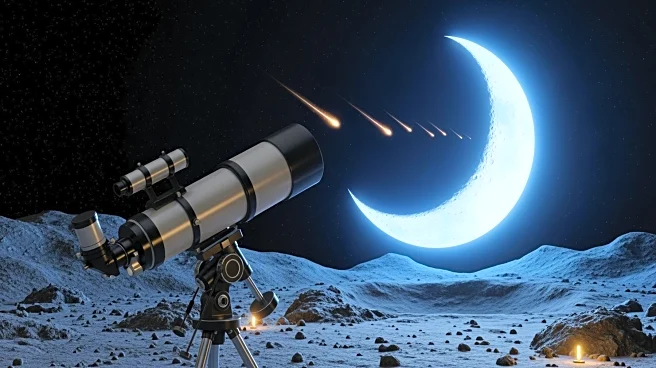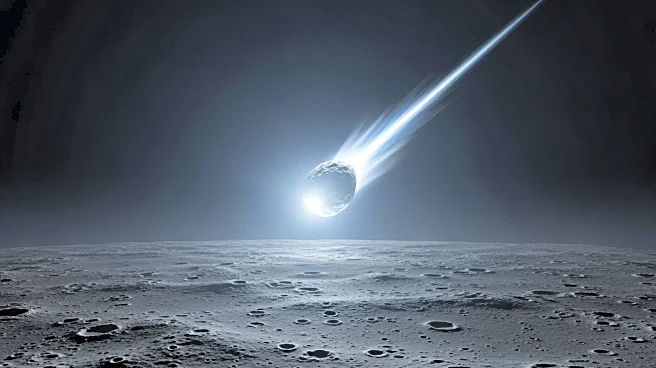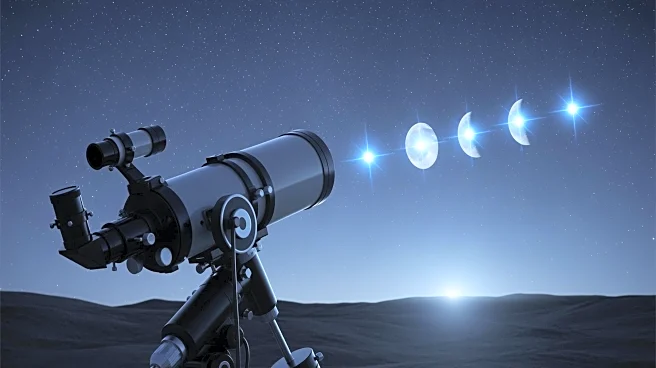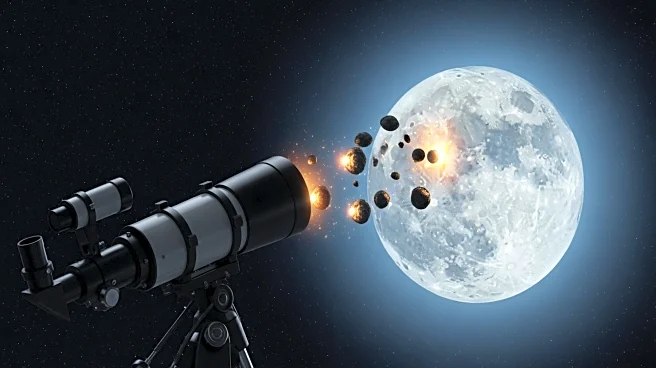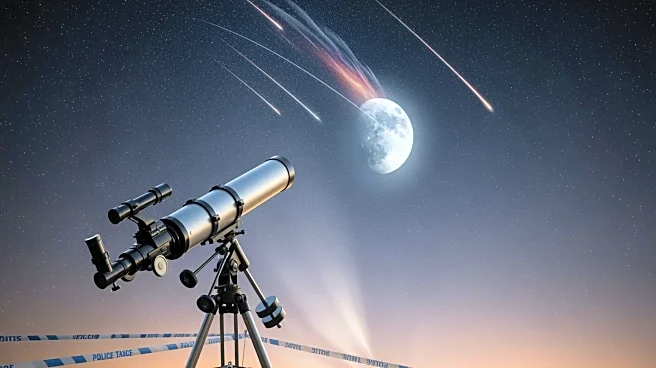What's Happening?
Japanese astronomer Daichi Fujii documented two meteors striking the moon on October 30 and November 1, sharing the footage on X. The impacts occurred at high speeds, creating bright flashes visible from
Earth. Due to the moon's lack of atmosphere, meteors can strike its surface directly, forming craters and releasing intense light. One meteoroid was estimated to weigh 0.4 pounds, potentially creating a crater about 10 feet wide. Fujii suspects these meteors were part of the Taurid meteor showers, known for large, fast-moving meteors.
Why It's Important?
These observations are crucial for understanding lunar surface dynamics and the frequency of meteor impacts. The lack of atmosphere on the moon means it is more susceptible to such events, which can inform future lunar exploration and mission planning. The public interest in these events can also boost support for astronomical research and education. Fujii's work contributes to the broader understanding of space weather and its effects on celestial bodies.
Beyond the Headlines
The impacts highlight the moon's vulnerability and the importance of monitoring space weather. Understanding these events can aid in preparing for potential hazards in future lunar missions. The observations also underscore the need for continued investment in space exploration and research, as they provide valuable data on the moon's geological history and potential risks.





